Neonatal jaundice: a guide to the latest equipment
In this issue of Infant, we look at the equipment used to detect and manage neonatal hyperbilirubinaemia – jaundice – a common condition that leads to a number of infants being referred to hospital in the first few weeks of life. Diagnosis of jaundice is made by measuring the level of bilirubin in the blood, either by taking a blood sample for estimation of total serum bilirubin (TSB) or by using a handheld, non-invasive jaundice meter. The practice of treating jaundice with phototherapy is well established and traditional phototherapy light systems can be positioned over a cot or mounted on an incubator hood. Alternatively, phototherapy blankets, wraps and cocoons can be used in hospital and at home. Eye protection is essential during treatment; a variety of eye masks, light shield curtains, incubator covers and cot canopies are available.
Neonates undergo numerous invasive procedures on a daily basis. This not only causes unnecessary stress for an infant but can also impact on their long-term developmental outcomes. Use of the MBJ20 Transcutaneous Jaundice Meter, from Delta Medical International Ltd, reduces the need for taking blood samples. The simplicity of operation and speed of obtaining readings makes repeated testing possible with minimal impact on the patient. This advanced and reliable instrument for transcutaneous measurement of bilirubin levels, increases working efficiency for healthcare professionals and also reduces the costs associated with frequent blood sampling for jaundice management. Test results are instantaneously displayed on the easy-to-read LCD display; the reusable monitor eliminates the need for costly disposables and uses standard AA batteries. The device can be calibrated by hospital biomedical engineers, eliminating the time and cost associated with returning to the manufacturer. It is easy to clean and maintain; a cost-effective device for instant point-of-care testing.
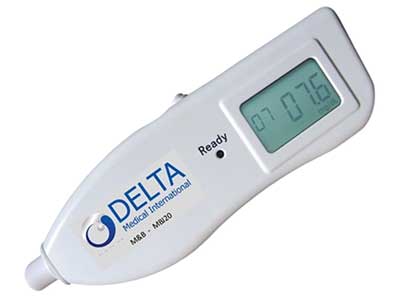
The MBJ20 Transcutaneous Jaundice Meter.
Central Medical Supplies offers a wide range of equipment for the treatment of neonatal jaundice, from eye protection and phototherapy nappies to overhead and wraparound LED systems. The BiliCocoon Nest System is adapted for preterm babies; it consists of a large pad allowing wrapping and kangaroo care. Also available, the Weyer Bilicompact LED Phototherapy Lamp, which enables manual and automatic phototherapy that can be used with a preselected therapy duration and intensity.
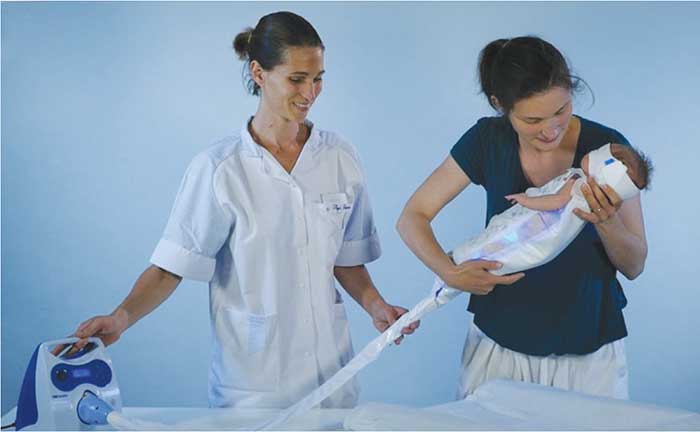
The BiliCocoon Nest System.
The Bilistick System is an innovative diagnostic device for measuring TSB, facilitating early identification of infants requiring phototherapy treatment. It consists of a Bilistick Test Strip, where a small amount of whole blood is loaded, and a Bilistick Reader, which analyses the sample and presents the results. Due to the easy method, small size and the use of a battery powered reader, Bilistick point-of-care testing makes diagnosis and monitoring of neonatal jaundice a simple practice, even outside the hospital during home follow-up. The Bilistick System is available from General Medical Ltd.
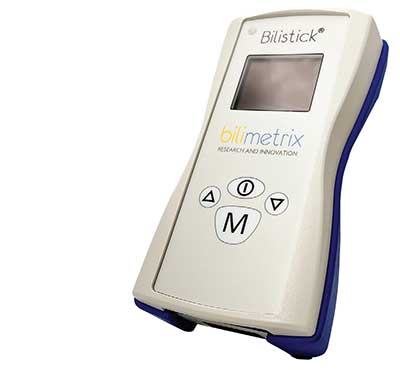
The Bilistick System.
BiliTex is a positioning aid specifically developed for phototherapy offering effectiveness combined with security and stability. With the BiliTex Phototherapy Wrap, an infant experiences a secure and flexible environment during the therapy, which allows the infant to adopt a relaxed position.
The innovative textile material features a special mesh structure with 85% permeability to the high-intensity radiation spectrum. In addition, the knit fabric is very soft, thermostatic and breathable. Available from Inspiration Healthcare in five sizes.
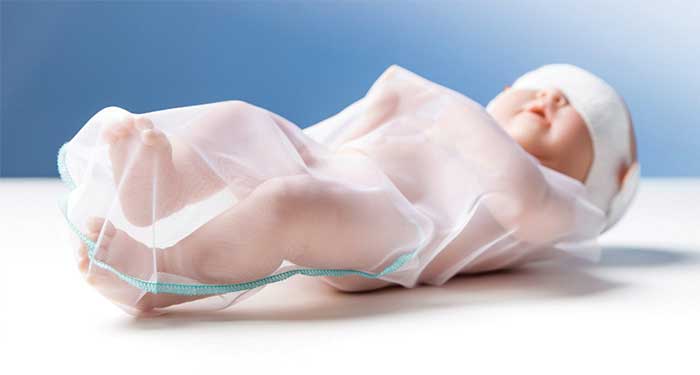
BiliTex phototherapy wrap.
The Atom Bili-Therapy Spot Type Phototherapy unit from Walters Medical is an LED phototherapy unit that provides effective treatment for jaundice with two levels of light intensity, which avoids the risk of rebound after treatment and also reduces the risk of over exposure when using only one level of light intensity. Also available from Walters Medical are the Atom Bili-Therapy Pad Type Unit and NeoPhotoshades – eye protectors with silicone adhesive backing.
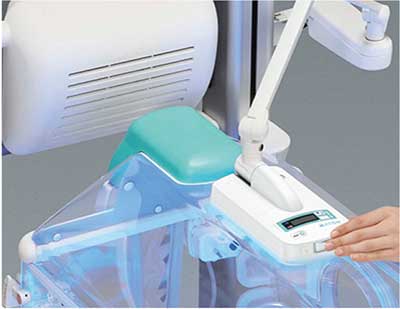
The Atom Bili-Therapy Spot Type Phototherapy unit.
The Dräger BiliLux is a compact and lightweight LED phototherapy light system. It provides individualised therapy with electronic documentation capabilities and flexible neonatal unit workplace integration. The optional BiliLux Radiometer instantly measures the irradiance that the baby receives and helps to ensure correct positioning.
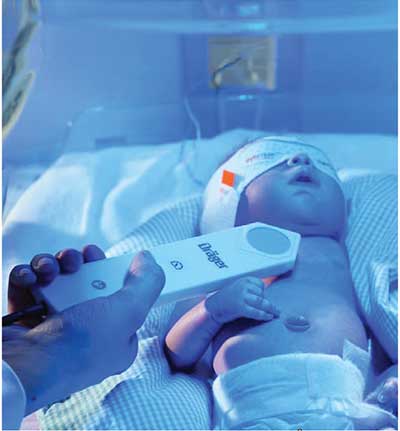
The BiliLux Radiometer in use in the BiliLux phototherapy light system.
Or read this article in our
Tablet/iPad edition


